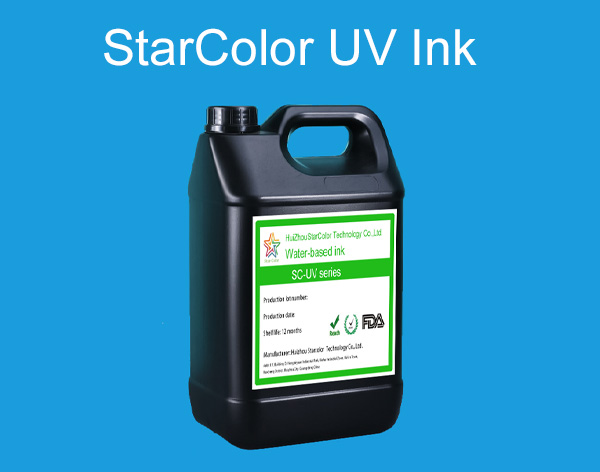 RU
RU
 EN
EN
 CN
CN

Position:HOME > Ink Knowledge > UV Ink
Date: Sep 01 2024 From: Star Color Views:

| Features/Projects | UV ink | UV coating |
|---|---|---|
| Application Areas | Mainly used in the printing industry, especially in the printing of plastic film, paper, metal foil and other materials. Often used in the packaging printing of medium and high-end products. | It is widely used in surface coating treatment in many industrial fields such as furniture, flooring, automobiles, and electronic products. |
| Curing method | Rapid curing by UV exposure. | Rapid curing by UV exposure. |
| Curing speed | Soon, improve production efficiency. | Very quickly, shortening the painting cycle. |
| Printing/painting effects | Bright colors, good printability, high definition. | Rich colors and glossiness enhance the beauty of the product. |
| Physical properties | Wear-resistant, corrosion-resistant, and weather-resistant, with good adhesion and hardness. | Excellent wear resistance, scratch resistance, hardness, flexibility and adhesion. |
| Environmental protection | Low VOC emission, environmentally friendly. | It also has the characteristics of low VOC emissions and meets environmental protection requirements. |
| Composition | Prepolymers, reactive diluents, photoinitiators, pigments and additives, etc. | Similar to UV inks, but formulations may be more complex to meet specific performance requirements. |
| Use process | It is evenly coated on the surface of the substrate through printing equipment, and then cured by ultraviolet curing equipment. | It includes steps such as substrate pretreatment, coating (spraying, roller coating, curtain coating, etc.), and UV curing. |
| Coating thickness | Adjusted according to printing requirements, generally thinner. | It can be adjusted according to coating requirements and may be thicker than UV ink. |
| Application flexibility | Suitable for a variety of printing methods and substrates. | Suitable for a variety of substrates and coating methods |
| Economical | Cost is affected by factors such as print volume, ink formulation and process. | Cost is also affected by factors such as coating area, coating formula and process. |
